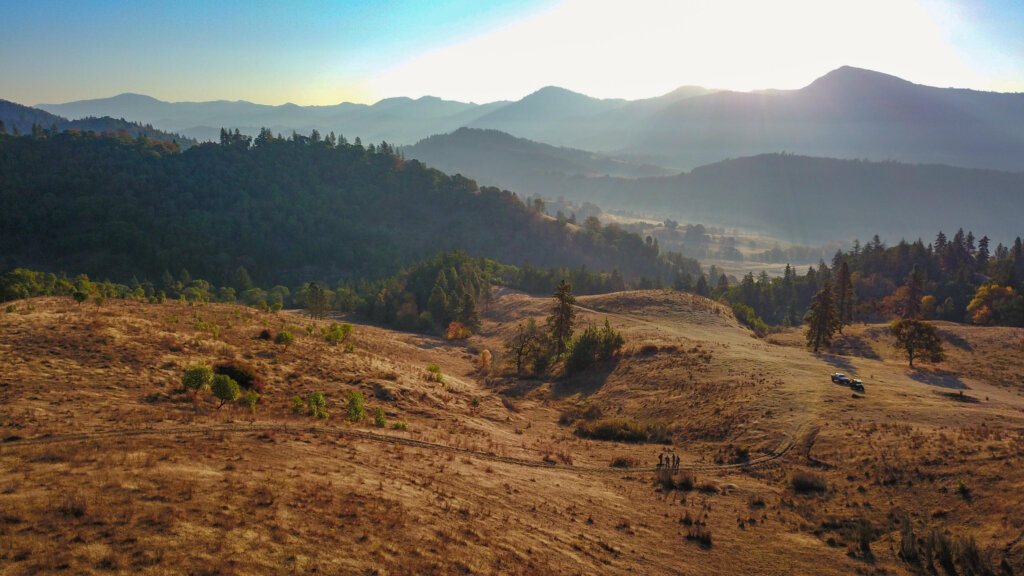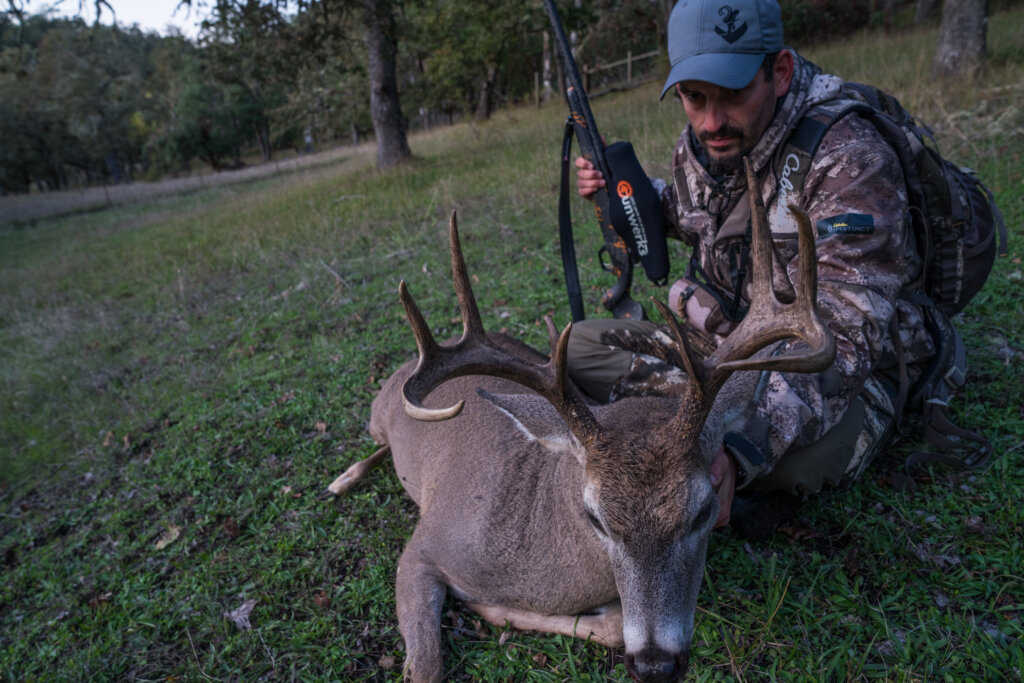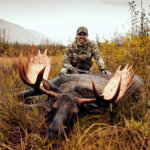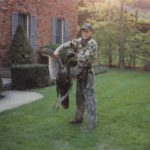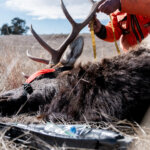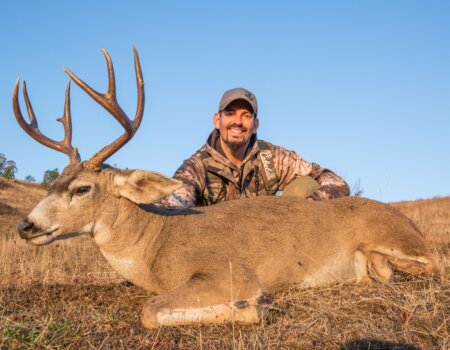The Columbia Whitetail deer is the western-most subspecies of whitetail deer that are found in North America. Because of their very limited range, they are also one of the least known subspecies of whitetail deer. Columbia Whitetails are much smaller in size than whitetail found in the eastern United states. They also have the smallest area of any of the whitetail subspecies, with the main population being limited to Douglas County in southern Oregon. Douglas county in southern Oregon is also the only area that is open for limited Columbia Whitetail hunting opportunities.
There are three ways to get your hands on one of these limited tags for Columbia Whitetail. Those are either (1) drawing one of the limited tags through the state lottery, (2) obtaining a landowner tag from one of the landowners in this limited area, or (3) working with an outfitter in the area who has scouted ahead of time and done all of the groundwork and secured a landowner tag for this extremely short season. Being an outsider to the area, the only real option for me was using an experienced local outfitter. My Dad and I had the pleasure of hunting with Rob last year for Columbia Blacktail and we had a great hunt. On that hunt, I learned more about Columbia Whitetails and really got the itch to come back and hunt them in the future. Upon returning home to Michigan, I immediately made plans to return this year to hunt Columbia Whitetails. With such a limited number of landowner tags, it is important to plan these hunts in advance. Typically, WTA works with Rob on bookings that are usually 16-24 months in advance.
Prior to 2003, the Columbia Whitetail deer were listed as endangered and had a total population of around 2,000. But because of some extensive conservation programs that incentivizing local landowners to keep and maintain proper habitat on their land for the whitetail deer, their population began to grow. Eventually their numbers increased to the point that they were delisted from the endangered species list in 2003. In 2005 a limited number of hunting tags were issued. Landowners in the area with property acreage over a certain size were given a landowner tag each year. These limited tags were also a way to incentivize the landowners to protect the much-needed habitat for the Columbia Whitetail deer. Columbia Whitetail are a great example of how hunting is helping in the conservation of various North American species. The landowners are rewarded for protecting the habitat with a tag. With this tag they can choose to hunt themselves, transfer it to another member of their family, or they can choose to sell the tag to an outfitter. The third alternative results in an additional income source for the landowner.
The areas that the Columbia Whitetails inhabit in Douglas County are also the same areas that Columbia Blacktails inhabit. The blacktails tend to be up higher in the hills and the whitetails tend to be down low in the thicker brush cover, but it is not uncommon to see both whitetails and blacktails while out hunting the area surrounding Roseburg. On this trip, the landowner tag that I had was for a ranch of just under 500 acres, which was all lower terrain, consisting of thicker cover. There were not many blacktails on the property, but it had a very healthy population of whitetails. For Columbia Whitetail there is a very limited season in early October. This is before their rut, so the deer generally follow a routine every day. Movement is limited during mid-day, with the majority of their movement coming right at first light and again the last couple hours of the day. As the ranch had a number of rolling hills and wooded areas on it, the primary method of hunting was spot and stalk. We would get situated on higher vantage points and glass into the lower areas below trying to catch the deer coming in and out of their bedding areas moving to different food sources. This year the acorn drop was extremely large, so there was no lack of food in the woods, which meant that the deer didn’t have to come out into the fields as much as in past years. This made glassing a bit tougher, but it was also much more intense. The goal was to catch movement in the woods and then once movement was caught, zone in to see what it was.
The morning of day one brought in heavy fog which limited visibility. Even with the limited visibility, we were able to glass up a number of deer including a few smaller bucks. One of the smaller bucks was a baby giant as you could tell he was young but had the frame to be a giant deer in the future. Roughly 6 years ago, the Columbia Whitetail herd suffered a hard hit of EHD that knocked out over 60% of the herd. Since then, the herd has continued to grow and by current estimation has a population above what it had at the time of the EHD outbreak. All great news, as this allowed all of the age classes to be back and established. After a busy morning, we called it for lunch as there was very limited movement midday.
After lunch we were back out glassing. With about an hour left before sunset, the deer started to come out to a grassy knoll just at the edge of their wooded bedding area. At last light we caught a glimpse of a big buck, but with light fading fast there was no way to get in close or even get a better look at him. However, the sighting ensured that we knew where we would be on morning two.
The next morning brought some light rain and continued fog that limited visibility even more than the previous day. After an hour of glassing, we decided to take a more aggressive approach and do a walk into the edge of the wooded area. We would move slow and steady and see if we could glass up any deer. We saw a number of does and a few smaller bucks. But as we were getting ready to call it a morning, Rob glassed down in a valley and caught a glimpse of a big buck walking through some thick vegetation. Unfortunately, the buck never stepped out of the thick patch. As the wind was not in our favor, we backed out with the plan of coming back that afternoon.
Knowing roughly where that big buck was, we switched from glassing and made another plan. We would put a make-shift blind together, with the idea that we would switch to a more traditional whitetail hunt. We would wait for him to feed out at night. We got in plenty early as we had to set up the blind. After three hours of waiting, we had about an hour left of daylight. We all caught movement, from our right, at the same time. It was the big buck with his head down moving at a good clip. He made it through the first opening before I could get the rifle up or Grant could get the camera switched on and ready. The buck turned and started heading our way, still moving at a good clip. Then he stopped behind a group of trees. As I raised up my rifle and got a good look through the scope, I could tell he was eating acorns. As we sat ready, he continued slowing working uphill to the right again. All we needed was for him to take eight more steps and he would be in the open. As we were watching the buck, the wind had slowly changed direction and we all felt it on the back of our necks at the same moment. The buck raised his head up, looked about, and out of curiosity, walked a couple of steps forward giving me the perfect shot. I could tell he was getting ready to bolt, so I made a good quick shot and he was down. This was one of those times where I would have loved a bit more camera footage, but I could read his body language and knew I only had a second or two to make the shot.
Walking to the buck, I took it all in. The leaves were changing color, the ground was loaded with acorns and the sun was slowly setting. What an amazing moment; what a great moment to be a hunter!!! This buck was everything and more than I could have hoped for. He was a truly great Columbia Whitetail. It was an amazing trip. Rob is a great person and, as always, is top notch. I look forward to getting back to southern Oregon with my muzzleloader to chase some of the blacktails that make that area of Oregon so famous. If you are looking to experience either a great Oregon Blacktail or a great Oregon Whitetail hunt, make sure to reach out to the team at WTA. Again, these hunts are usually booked out far in advance, so plan ahead. And, Happy Hunting!

